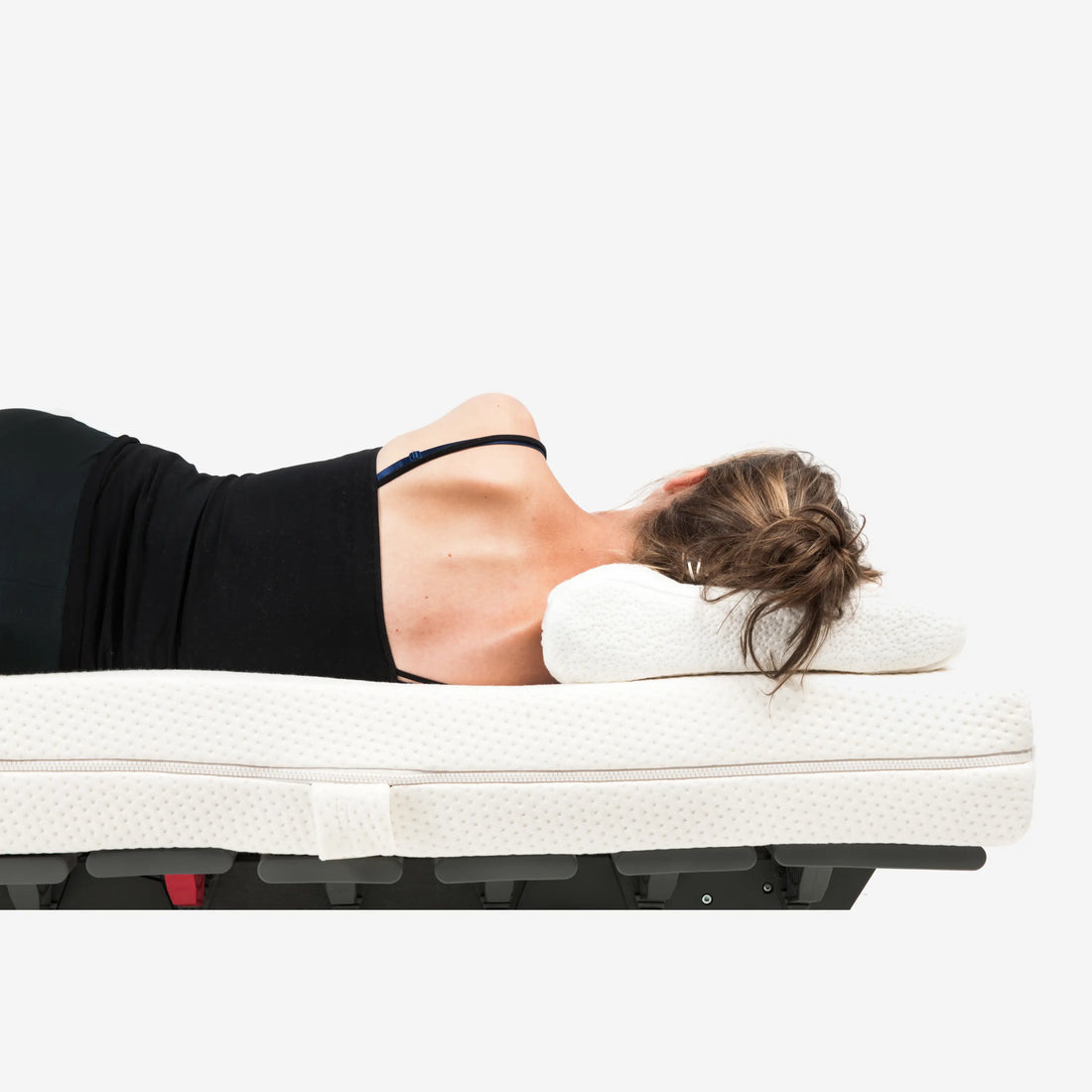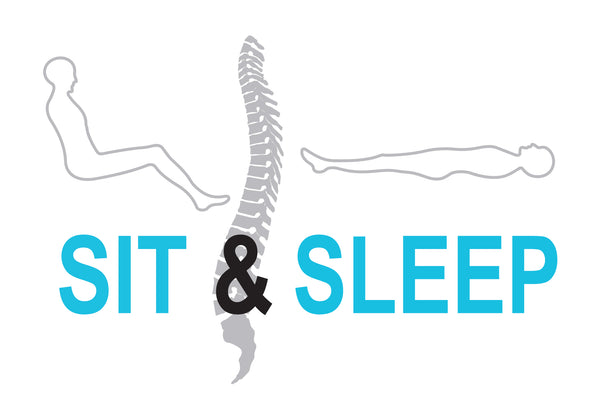
What is the best pillow?
A pillow is like a piece of clothing. It comes in different sizes, shapes, and materials. Just like the garment, the pillow should fit and be comfortable to use. Fortunately, the aesthetic aspect is less important. Therefore, it's difficult to say what the best pillow is, as it's different for everyone. However, it's best to consider certain pillow characteristics to ensure a good night's sleep.
What should I pay attention to when purchasing a pillow?
Of course, we all shift positions occasionally while sleeping, which is also healthy for distributing pressure on certain parts of our bodies. The way you primarily sleep largely determines the type of pillow you'll need. Your body type will also be a determining factor in choosing your pillow.
- Are you a side sleeper and/or a back sleeper? That's perfectly fine! Just make sure you're providing the right support for your head and neck. We do this by looking at various parameters of the pillow, as well as your own body.
- Shape: Rectangular pillows are preferred over square pillows because they allow for more freedom of movement when rolling to the other side without falling off the pillow.
- Height: The pillow should be high enough. It fills the space between your shoulder and neck. The best pillow ensures that your head and cervical vertebrae are in a horizontal line, in line with your spine.
- Neck roll: People with a narrow and/or long neck benefit from a pillow with a neck roll. This bulge provides extra support for the cervical vertebrae. If you have a short and/or wide neck, the neck roll can sometimes be bothersome.
- Pillow firmness: The density of the filling determines the firmness of the pillow. We distinguish three firmness levels: soft, medium, and firm. We determine the firmness—along with the height—based on the horizontal alignment of the head. Subjective feel is also important here.
- Material and filling: If your pillow isn't dimensionally stable, the filling will shift during your sleep. This means you won't get adequate support. The result? You'll sleep poorly and develop neck pain.
- Viscoelastic foams (memory foam, memory foam, Tempur) are characterized by their sensitivity to pressure and temperature. This type of pillow feels firm in cold temperatures and (too) soft in warm temperatures. It also takes time to adjust when your sleeping position changes. When you turn from your back to your side, the part of the pillow you weren't resting on initially feels firm and uncomfortable. The pillow then needs to adjust to the pressure and temperature of your head and neck.
- Preferably use a material that retains its shape but is also elastic. Latex has these properties and is therefore a good choice.
- Are you a stomach sleeper? Then we recommend a very thin pillow, or none at all, to prevent or reduce hyperextension of the neck.
What is the importance of a pillow protector and a pillowcase?
The importance of a pillow protector and pillowcase shouldn't be underestimated. The pillowcase forms the first barrier between your head and pillow, primarily preventing dandruff and hair. The pillow protector, also called a pillow protector, forms the second barrier protecting your pillow and will primarily absorb the excess moisture and sweat you excrete during the night, acting like a sponge.
These two extra layers will extend the life of your pillow and ensure a more hygienic night's sleep. Both the mattress protector and the pillowcase can be washed at 60°C, ensuring the removal of all dust mites.
Elasticity is important when choosing your mattress protector and pillowcase. If they are elastic, the pillow will be able to do its job. If the pillowcase or mattress protector is too stiff or too small, the pillow won't be able to expand, and consequently, your head will remain higher than if you were to lie directly on the pillow.
How do I know if I have the right pillow?
- Ask someone to check whether your cervical vertebrae are in a horizontal line.
- Please test the pillow before purchasing.
Can I test a pillow first?
At Sit & Sleep this is possible!
Because a pillow is so personal, we recommend testing it for a few nights before purchasing. Some adjustment symptoms may occur during the first three nights. As long as you don't experience any pain, you can let your body adjust to the new pillow. If you experience pain, it's important to try an alternative as soon as possible. It's best to take a photo of yourself lying on your side and back on the pillow you're testing. These photos will give the specialists in the store a better idea of which pillow would be more suitable for you.
The pillows are always supplied with a pillow protector to ensure hygiene.
Besides the pillow, the type of mattress and bed base are also important for achieving the correct sleeping position. The pillow, mattress, and bed base are three complementary elements that together determine the sleeping position.





